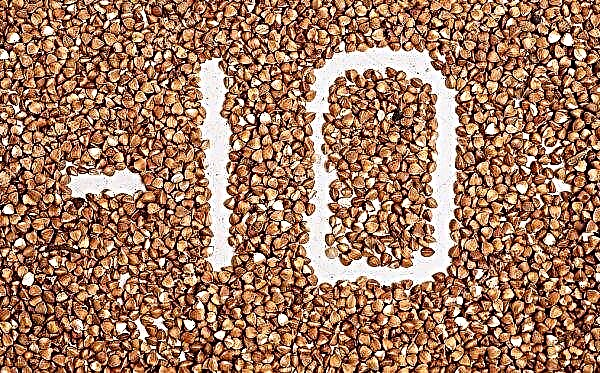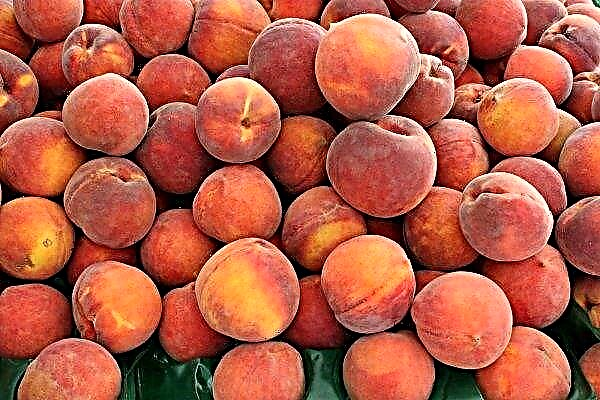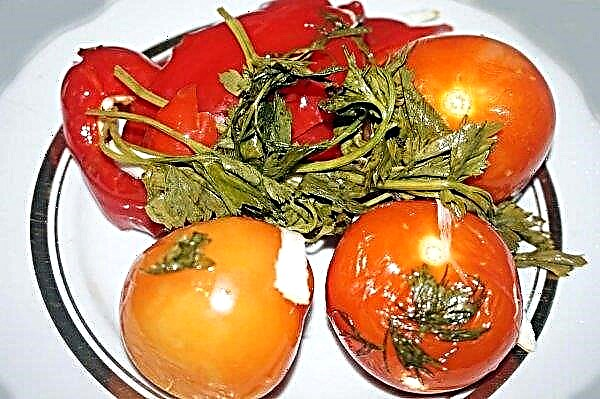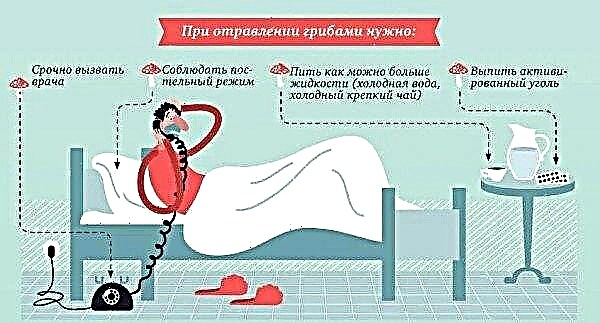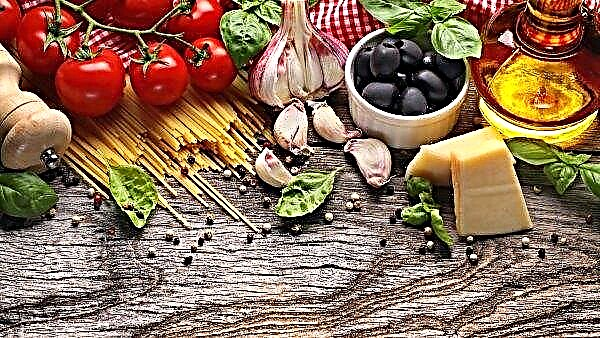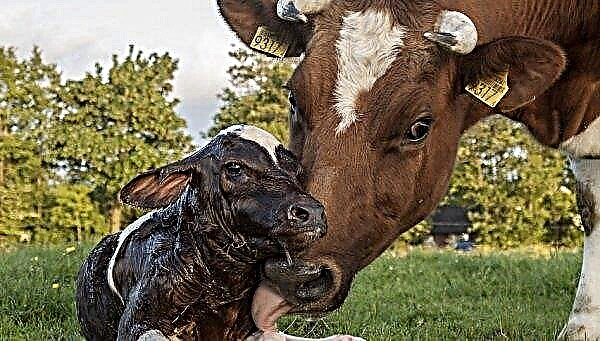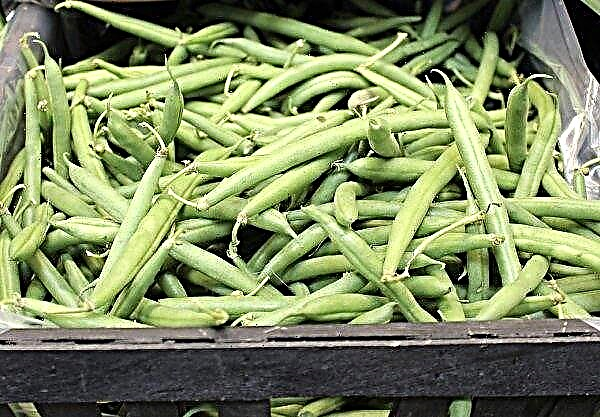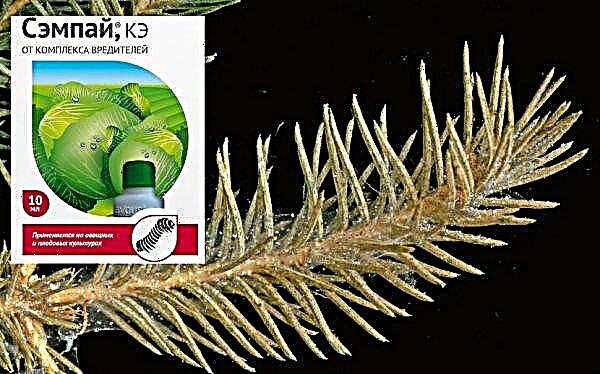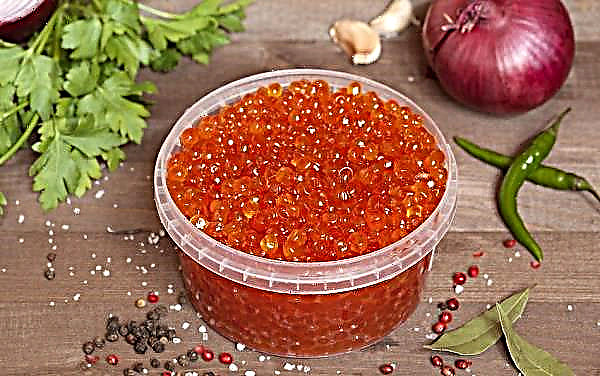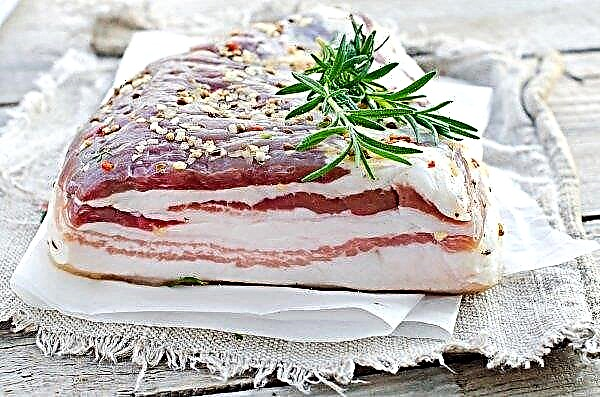When the calf begins to have loose stools, this is an occasion to sound the alarm and start taking action immediately. Diarrhea poses a huge danger to the baby, because it does not go away on its own and leads to death if left untreated.
Causes of diarrhea in calves
To begin treatment, you need to establish the cause of diarrhea.
The most common causes in calves are as follows:
- poor quality feed or high salt content in it;
- infections and viruses;
- unsanitary conditions;
- food poisoning;
- weakened immunity;
- worm infection;
- a sharp transition to a new diet.
 Watery stools may appear if feeding patterns are not respected or the calf is fed with stale, too chilled milk.
Watery stools may appear if feeding patterns are not respected or the calf is fed with stale, too chilled milk.Important! It is because of improperly organized nutrition that about 60% of young individuals die.
Bloody diarrhea usually indicates that toxins have been ingested with food. If the masses are green-yellow, with blood and mucus, it is a coronavirus. These are cases when you can not do without medication.
Yellowish or white diarrhea speaks of rotavirus - while the animal has an elevated temperature, feces are white, watery, and they smell sour.
Symptoms of Diarrhea
When the liquid stool of the calf has already begun, it becomes obvious, so you need to immediately begin treatment. But there are certain symptoms that precede diarrhea. If you pay attention to them and take action in time, serious problems can be avoided.
Symptoms of approaching diarrhea in calves:
- decreased appetite;
- lethargy;
- the temperature has crossed the mark of 40 ° C;
- dry crusts in the nostrils;
- dry upper lip (mirror);
- dehydrated feces.
Due to dehydration and lack of appetite, the calf loses about 10% of its weight in just one day of diarrhea. Weight recovery requires at least three weeks while providing excellent conditions.
Diagnosis of the disease
Correct diagnosis is the key to successful treatment, and best of all, if this is done by a specialist. Today, there are a number of tests that help to accurately identify the disease.
These are tests to identify:
- E-Coli K99;
- coronavirus;
- cryptospordia;
- rotavirus.
If the veterinarian is not nearby, pay attention to the course of the disease. If the cause of diarrhea becomes an infection, infection with any virus, they all manifest themselves with certain characteristics. First of all, this is the color of feces, as mentioned above.
Before consulting with a veterinarian, observe the color of the stool, its consistency (with mucus, foam, watery, bloody), smell (putrefactive or sour), frequency of bowel movements. Check for calf mouth ulcers. Temperature measurement does not always give a result, since it does not increase with coronavirus.
Did you know? According to the UN, cow farms emit 18% of the world's greenhouse gas and harm the environment more than motor vehicles. From manure, methane heats the earth faster than carbon dioxide, 20 times.
The more information you have, the faster and more accurately the doctor will diagnose.
Home treatment
Every owner should know what to do in case of a liquid stool in a calf and how it can be cured. Bacteria develop gradually and the measures taken in the first three days are the most effective. They are largely determined by age.
- With diarrhea in a newborn baby, you need to move it to a warm, dry place. The basis of therapy is oral saturation with saline solutions (electrolytes, which are discussed in the article below). Before brazing, the saline solution is heated to the calf's body temperature (38–40 ° С). At the same time, milk is removed from the diet, because during this period it is not absorbed.
- Weekly calves are more likely to suffer from diarrhea due to infections and viruses that can only be stopped with medications and antibiotics. Again, it is important to quickly identify the root cause.
- Cubs at 1 month and even 2 months are more susceptible to diseases due to infections transmitted by internal parasites, and mold, if it is in the barn, manger. Often calves of this age begin to vilify due to banal unsanitary conditions or stress, a sharp change in diet.
The methods of treatment at home are affected not so much by age as the cause of the disease. Today, there is no drug or method that eliminates diarrhea in calves with a 100% result and immediately, so everyone chooses what they trust more.
Medically
It is not recommended to engage in self-treatment of livestock, if you do not have enough experience for this. It is better to call a good veterinarian or at least consult with him over the phone.
Drug treatment is used in cases where the cause of diarrhea in a calf is food poisoning or a viral infection. Such medicines are divided by type.
Rehydrates
Apply orally (by mouth). Their main task is to restore the lack of salts and fluids in the body. Rehydrates contain beneficial sodium, potassium and chlorine - this is the first thing that is used for newborn calves. The product also contains glucose and sucrose.
A common powder preparation has the same name "Regidrate" (or "Regidron"). In 10 l of hot water (not boiling water, 70–80%), 3 packets are diluted with stirring until completely dissolved. The prepared solution can be stored for 3 days at a temperature not exceeding 15 ° C.
The duration of treatment is 5-7 days, in the first 2 days 6 drinks are made with the addition of a solution in every 250 ml of colostrum.
Sorbents
The use of sorbents helps to cleanse the body of toxins, while they do not affect the absorption of food, slowing down only motility. For calves, you can take the human Bifidumbacterin forte. This preparation contains not only sorbent, but also bacteria useful for the intestines.
The course of treatment is one and a half weeks. The drug is diluted with boiled water at room temperature at the rate of 1 dose (bottle) for 1 tsp. water. For a day, 12-15 doses should be divided into 2-3 doses half an hour before feeding.
Enzymes
Used if the calf has an enzymatic disorder of the digestive system. You can use the drug "GastroVet" in powder. It is soluble in hot water with a temperature of 50 ° C at the rate of 10 g per liter.
Did you know? Cows can reach speeds of up to 50 km / h. But their run is short.
The resulting solution is mixed with colostrum or milk at room temperature and left to ripen. Oral administration. A daily dose of 90–115 ml per individual, a single dose of 30–40 ml.
Probiotics
The probiotic corrects the microflora of the gastrointestinal tract. This is all the same Bifidumbacterin (simple) or veterinary "OLIN". Both drugs are bred only before drinking the calf - valuable bacteria outside the body live very little, so there is no sense in a solution that has stood even for a short time. Dissolve in water at a temperature of 30 ° C.
Another veterinary prebiotic is Lactobifadol. Calculation of 0.1-0.2 g per 1 kg of animal. Give twice a day with food, milk, colostrum for 7-10 days. Also used is the veterinary drug "Monosporin", which can be given to newborns in the first hour of life.
Introduced with food 50 g per individual under the age of one month.
Antibiotics with electrolytes
Antibiotics treat viral infections. Effective drugs "Levomycetin", "Tetracycline" and "Biomycin." For 1 kg of calf weight - 10-20 mg of antibiotic. In the room where the sick person is kept, it should not be hot. During treatment, milk is removed from the diet.
Electrolytes have a completely different spectrum of action - this is a saline solution, which at home can be prepared independently.
Important! You can not use sugar instead of glucose - it will aggravate the situation. Sugar is not absorbed in calves.
Per liter of water you need:
- 1/3 h. Crude, but can be food, salt;
- 1 teaspoon of soda;
- 1 tbsp. potassium carbonate or white ash from a fire;
- 1 tbsp. glucose (sold in a human pharmacy as a solution) or 1 teaspoon of honey.

Folk remedies
Alternative recipes are good only with mild diarrhea in calves. If they do not give a result for three days of treatment, you should immediately go to treatment with pharmacy medicines. Old methods do not help with viral infection, but they can be used simultaneously with them, as additional assistance.
Decoctions
There are some good decoctions to help with loose stools in calves:
- 150 g of barley (oats or rye can be used) and a stove, boil for about 30 minutes, stirring per liter of water. At the end, express the liquid and give it to the patient for two days, 0.5 l 5 times a day. During this period, milk is excluded from the menu.
- For the same amount of water, 50 g of dry flax seeds, boil for an hour. Strain, pour boiled water to 2 liters. Water the calf twice a day, 0.5 l each.
Only with mild diarrhea.
Tinctures
Two effective tinctures for calves:
- For 1 liter of water - 100 g of rosehip berries or hypericum leaves. Pour boiling water and infuse for 8 hours. Let's drink calf tincture three times a day in a dosage of 250 ml.
- Prepare saline solution - dissolve 9 g of salt in 1 liter of boiling water. Pour the solution into a three-liter jar, attach a siphon to the lid, equip with tubes and a clamp. Add 200 g of chopped onion to the saline in the jar (take varieties with a red peel), shake for several minutes. Pour 100 g of vegetable oil into the mixture so that the solution is completely covered. Insist 2 days. With the help of a siphon, it is easy to extract a finished healing tincture in a metered way. The prepared mixture is given to the animal within one day - only 5 drops with hour intervals between them. For 1 kg of animal weight - 5 ml.

Tea solutions
The best result you get only from a nutritious tea solution. It is prepared simply: to brew a liter of black tea (without flavoring additives) and add 1 tbsp. salt, 3 raw chicken protein. For 1 kg of calf weight, solder 10 g of the drink. The course is one month.
This is an adjuvant for a minor disorder. If diarrhea lasts three days or more or its original consistency has a strong fetid odor with impurities, the cub is sluggish, eats badly - teas will not help.
What absolutely can not be done with diarrhea
With loose stool, the calf is strictly prohibited:
- uncontrolled feeding - for good digestibility of food, animals should have a clear regimen;
- cold milk;
- compound feeds and other foods high in salt;
- overfeeding of young animals - calves are not adapted to overload the stomach;
- Keep in a damp, cold room.
The air in the barn should circulate well. Regularly clean and disinfect your wards so that the pathogens do not multiply.
What is the risk of diarrhea
As mentioned, diarrhea in calves does not go away by itself and, in the absence of intervention, leads to the death of the animal. Negative consequences can accompany an individual even in the future, worsening her well-being and physiological development. Good appetite is often not restored at all, so this individual will gain weight more slowly than others.
Good appetite is often not restored at all, so this individual will gain weight more slowly than others.
Important! Cows with diarrhea at calf age have less milk yield.
Preventive measures
Stopping the disease before its height is better than treating it and dealing with the consequences.
Follow basic diarrhea prevention measures for calves:
- observe sanitary standards in the barn;
- ventilate the room where the young animals are kept (but without drafts);
- vaccinate animals to avoid viral diseases transmitted through milk and colostrum;
- monitor the quality and quantity of food;
- prohibit any contact with manure;
- do not let anyone except a lactating cow to the newborn;
- follow the feeding schedule.
These simple rules greatly reduce the risk of diseases in young and adult cows. No matter how simple the method of self-treatment of calves at home may seem, never neglect the help of a qualified veterinarian. The baby’s organism is very sensitive, the owner’s task is to take into account the needs and characteristics of the wards in order to raise good, healthy cattle.
No matter how simple the method of self-treatment of calves at home may seem, never neglect the help of a qualified veterinarian. The baby’s organism is very sensitive, the owner’s task is to take into account the needs and characteristics of the wards in order to raise good, healthy cattle.


